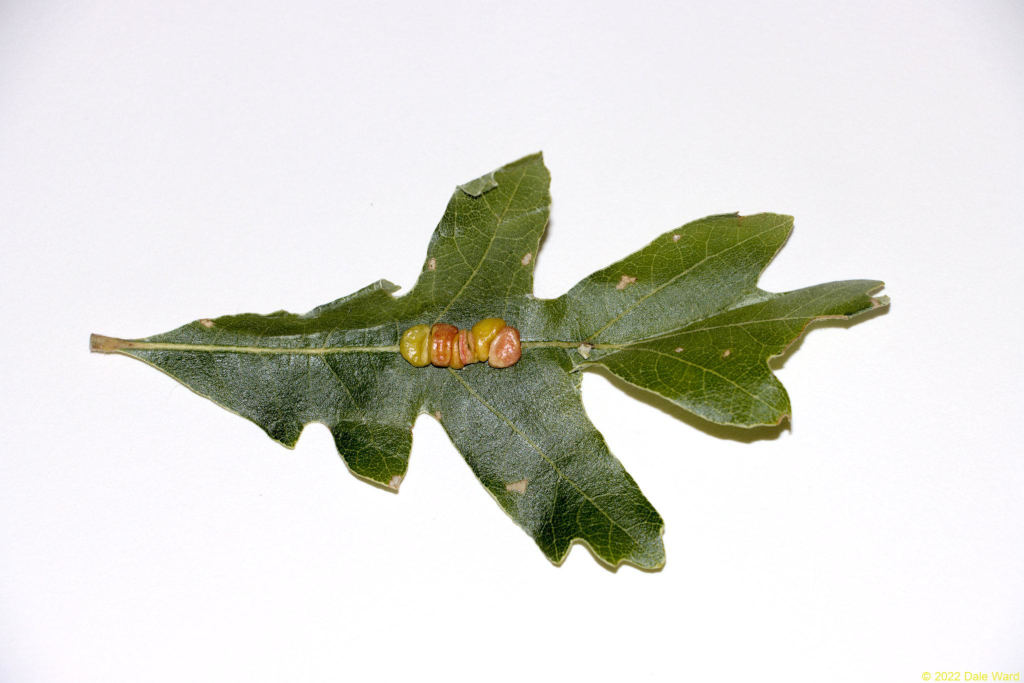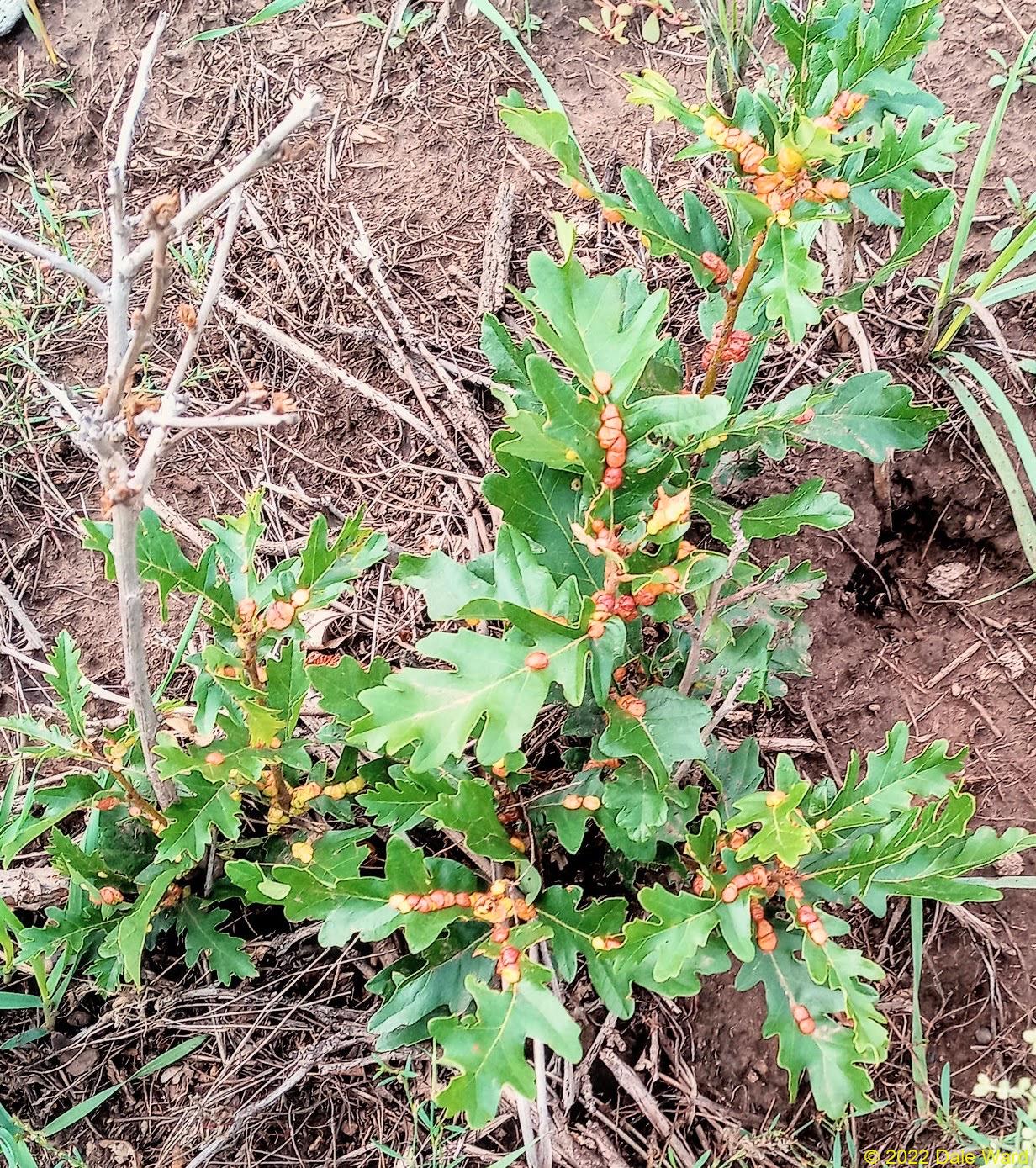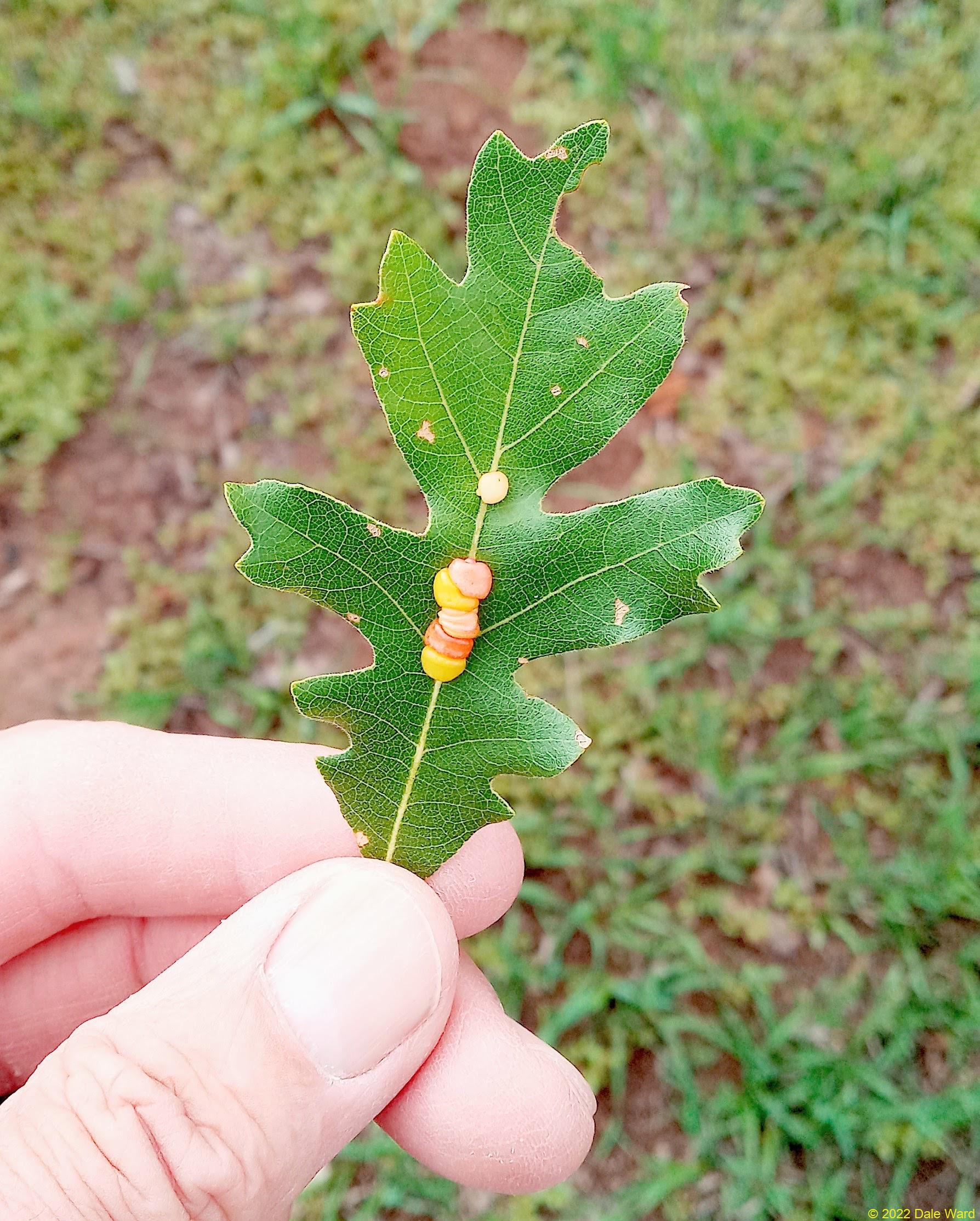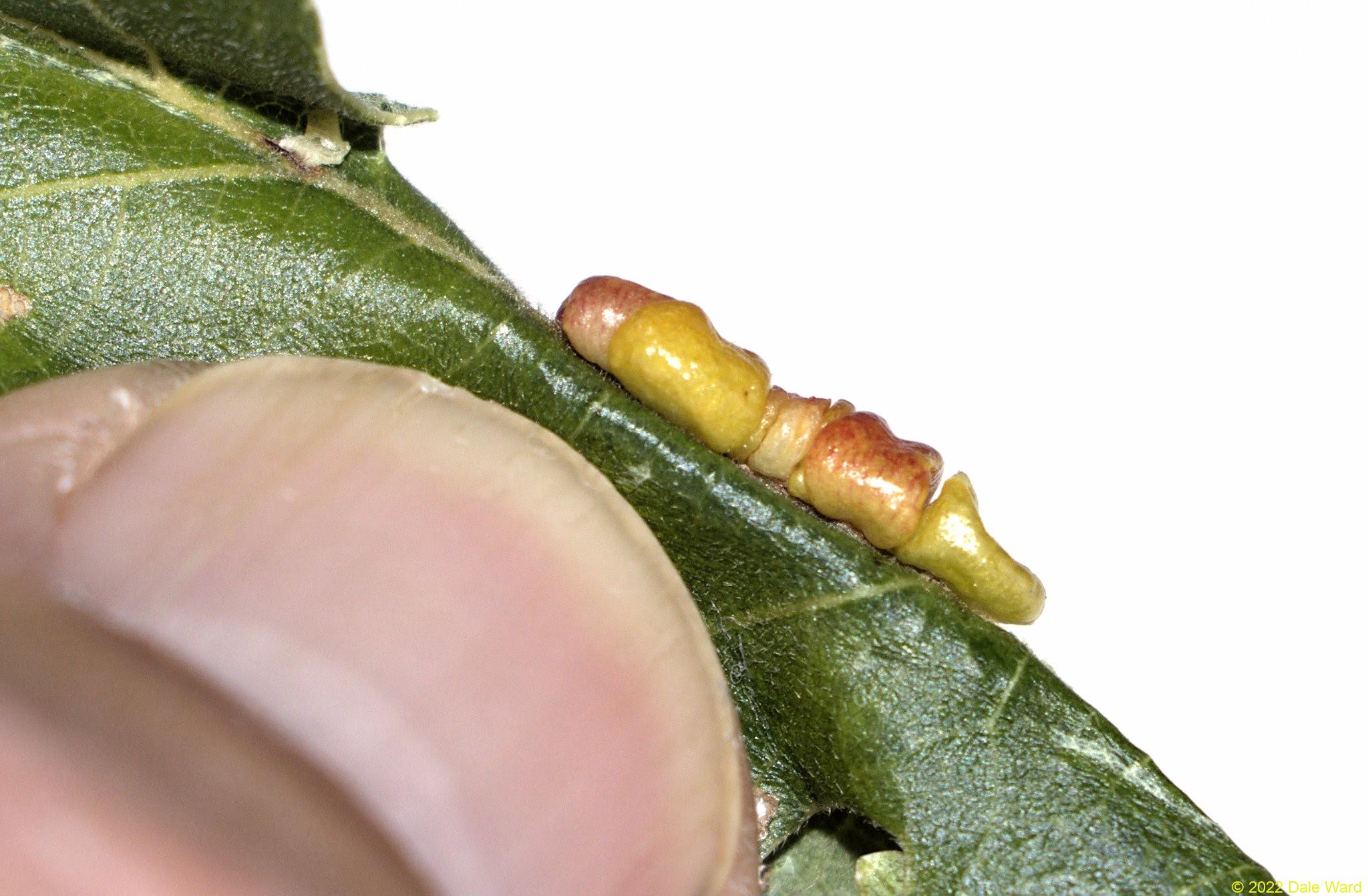Xanthoteras eburneum - Cynipid Wasp galls on Gambel Oak
I was on a hike the other day in a Ponderosa Pine forest in Southwestern Colorado, at about 7000’. There were a number of small Gambel Oak seedlings in the trail, and some of their leaves had a line of swollen objects stuck to their leaves.
 _Xanthoteras eburneum_ gall on Gambel Oak leaf
_Xanthoteras eburneum_ gall on Gambel Oak leaf
The objects were about 5 mm across, and a sort of oval shape. They were mostly growing on the upper side of the leaves, and mostly along the mid-vein of the leaves. The colors of the objects varied from brown, to orange, to red.
The objects were jammed together on the leaf, almost like they were trying to crowd each other out. There was something disturbing and eye-catching about the infected leaves.
Well. I know what looked disturbing. The leaves looked for all the World like they had an infestation of fat Dog Ticks.
But it wasn’t Ticks. It was, of course, yet another type of gall that infects Oaks.
 _Xanthoteras eburneum_ gall on Gambel Oak seedlings. The galls seemed to mostly affect the seedlings that were growing in or near the trail.
_Xanthoteras eburneum_ gall on Gambel Oak seedlings. The galls seemed to mostly affect the seedlings that were growing in or near the trail.
Thinking about this and its ramifications is so cool that it makes my head want to explode. Galls are, essentially, houses that a parasite has convinced the plant to grow so the parasites have safe places to eat and live.
I had a tough time identifying these galls. I figured that they were probably caused by a Cynipid Wasp, as in these Oak galls, but had not gotten any further than that.
Fortunately, I posted a question on Bugguide.net and a gentleman named Joshua C’deBaca was kind enough to identify the galls. It’s nice when the World Wide Web works in this manner.
These galls were indeed caused by a Cynipid Wasp, probably Xanthoteras eburneum - the “Brown-Melon-Gall Wasp”.
 _Xanthoteras eburneum_ gall on Gambel Oak leaf
_Xanthoteras eburneum_ gall on Gambel Oak leaf
An interesting thing about these galls - they mostly emerged from the mid-vein of the leaf. The galls were much broader than the mid-vein, though. They hung over and down the edge of the mid-vein and pushed into the leaf itself, like a beer-belly hanging over the top of a pair of jeans. You can see this effect in the photo below, as well as the way that the galls are so closely jammed together that they seem to deform each other.
 Side view of _Xanthoteras eburneum_ gall on Gambel Oak leaf. You can see that the galls emerge from the center vein of the leaf, and sort of wrap around it.
Side view of _Xanthoteras eburneum_ gall on Gambel Oak leaf. You can see that the galls emerge from the center vein of the leaf, and sort of wrap around it.
What I’ve read about these galls suggests that all of the adults would will probably be females. That fits with the life histories of other Oak-gall-forming Cynipid Wasps -they tend to alternate between generations that reproduces by parthenogenesis and generations that reproduce via sexual reproduction.
As Tom Waits said last Semester, “Everything you can think of is true.”
Sources:
Many thanks to Joshua C’deBaca over at https://bugguide.net/user/view/146068 for the identification of these galls.
Russo, Ronald A. 2021. Plant Galls of the Western United States (Princeton Field Guides, 142). Princeton University Press. ISBN-10: 0691205760.